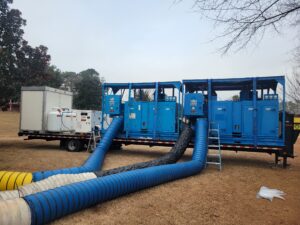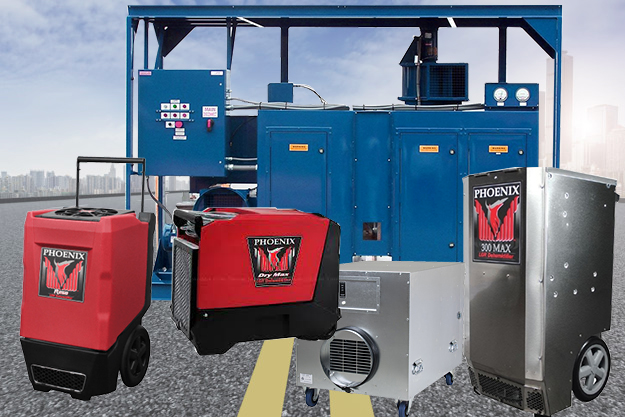Blog

Equipment requirement for Desiccant Dehumidifier project
- Calculate the cubic feet measurement of the affected area.
- Determine how many air changes per hour are required for effective drying. Multiply the cubic feet of the structure by the desired amount of air changes. This will yield the cubic feet per hour of dry air that must be introduced to the building for desired drying to occur.
- Take this final number and divide by 60. This will give you the cubic feet per minute of air required.
Example: A building with dimensions of 150ft (length) by 150 (width) 10 foot ceiling (high), where 3 air changes per hour are desired.
150x150x10=225,000 cu.ft.
225,000×3=675,000 cu.ft
675,000/60=11,250 CFM required.
(2) 5000CFM and (1)3000 CFM desiccant dehumidifier should be used.
20 Sept
———————————————————————————————————————————————————————————————————————————–
. 20 Sept
20 Sept
DIY – When do I handle a Water Damage Problem myself?
If you do not have insurance and trying to save money or want to keep restoration companies from charging to much. Give our office a call and we can help mitigate the loss with our expert technicians and support staff for half the price….
————————————————————————————————————————————————————————————————————————————–
 20 Sept
20 Sept
SCI Supply Hotspot
Our state of the art equipment consists of restoration equipment and supplies for sale, restoration rental equipment, consulting and subcontractor drying services. Our product line includes but not limited to air movers, lgr dehumidifiers, desiccants, air scrubbers, generators, temporary power supplies, etc. …
